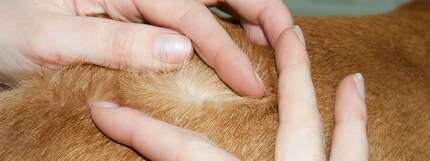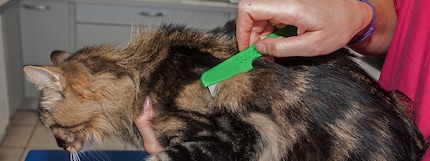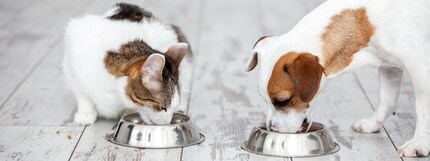
Autumn is flea season - how to protect your pets and yourself
"My pet certainly doesn't have fleas, I know that." Many pet owners are surprised when the vet brushes thousands of these animals and their faeces out of their fur at the next check-up. I'll explain below what you can do to prevent this from happening in the first place. And also how you should act if it's already too late.
They are small, annoying and unwanted. But unfortunately that alone is not enough for them: No, they also jeopardise the health of humans and animals. Since fleas are statistically one of the most common parasites in pets, an infestation is not surprising. The same applies here: know your enemy, then you can protect yourself and your loved ones from them.

Who are the annoying beasts
They are only between two and three millimetres in size, insects and love blood. The cat flea, which goes by the name "Ctenocephalides felis", is most commonly found in cats, dogs and humans. Yes, that's right, the cat flea can also occur in dogs and humans. Just like the dog flea doesn't shy away from humans and the human flea doesn't shy away from cats. Nasty little things, aren't they? They can jump up to 40cm and animals can also infect each other. Colleague Livia can tell you a thing or two about this. Her dog has been suffering from an infestation of this vermin for a few days now.
The most likely way for animals and humans to become infected is through a "flea-infested" environment. This is because fleas reproduce extremely quickly and vigorously: a female can lay up to 750 eggs per month. These are deposited in the animal's fur and then spread throughout the home. In other words, wherever your pet goes. In about three weeks, the little things turn into adult fleas and the game starts all over again. So you can't just sit the situation out, unfortunately. Once on the animal or human, they suck as much blood as possible. This then causes itching and skin irritation. Bacteria or viruses are also transmitted in this way

Tiny and barely visible: fleas are barely recognisable to the naked eye.
How can you protect your pet and yourself
It's important to emphasise right away: fleas are not synonymous with a lack of hygiene! Even with an infestation, thorough hygiene measures are not enough to completely destroy the parasites. They hide in every tiny crevice, in every little hole - this can be a carpet, a crack in the wooden floor or a narrow gap in the wall. If your cat is a house cat and doesn't go outside at all, the risk of infection is also reduced.
With a flea comb and by regularly brushing your cat or dog, you can quickly recognise whether your pet has fleas. Simply shake out the comb on a piece of kitchen paper and moisten it: If black or red spots are visible, this is a sign of fleas and their faeces. It is therefore important to check your pet regularly. Also, if you notice that your pet or dog is scratching more often - this is also a sign of a flea infestation. Other weapons in the fight against the vermin are flea collars or tablets that inhibit the growth of eggs in the fur.

What to do if my pet has fleas
As soon as you know that your pet has fleas, you must take action. You should wash all washable items that have come into contact with your pet at a temperature of at least 60 degrees or freeze them for a week. This is guaranteed to kill all fleas. It also helps to vacuum floors and walls - yes, even the walls (especially in wooden houses). Because these nasty things really do crawl everywhere. In the case of sofas, it is best to wash the cover and vacuum the rest. If you have a steam cleaner, this will of course also help to get rid of the uninvited guests efficiently.
I personally recommend repeating the whole cleaning process at least two to three times. Yes, I know, it sounds very, very time-consuming. But it's worth it. Because if you clean everything "only" once and the bugs come back, the whole process starts all over again. So it's better to play it safe and clean thoroughly. Anti-flea products for your animals also help to get rid of the parasites. As with prevention, there are contact poisons, development inhibitors or feeding poisons - against the fleas, of course, not against the pets. Of course, a visit to the vet is also necessary. Also after the infestation to see if the fleas are all gone.

Against fleas - for dogs and cats
When I'm not stuffing my face with sweets, you'll catch me running around in the gym hall. I’m a passionate floorball player and coach. On rainy days, I tinker with my homebuilt PCs, robots or other gadgets. Music is always my trusted companion. I also enjoy tackling hilly terrain on my road bike and criss-crossing the country on my cross-country skis.
Interesting facts about products, behind-the-scenes looks at manufacturers and deep-dives on interesting people.
Show all